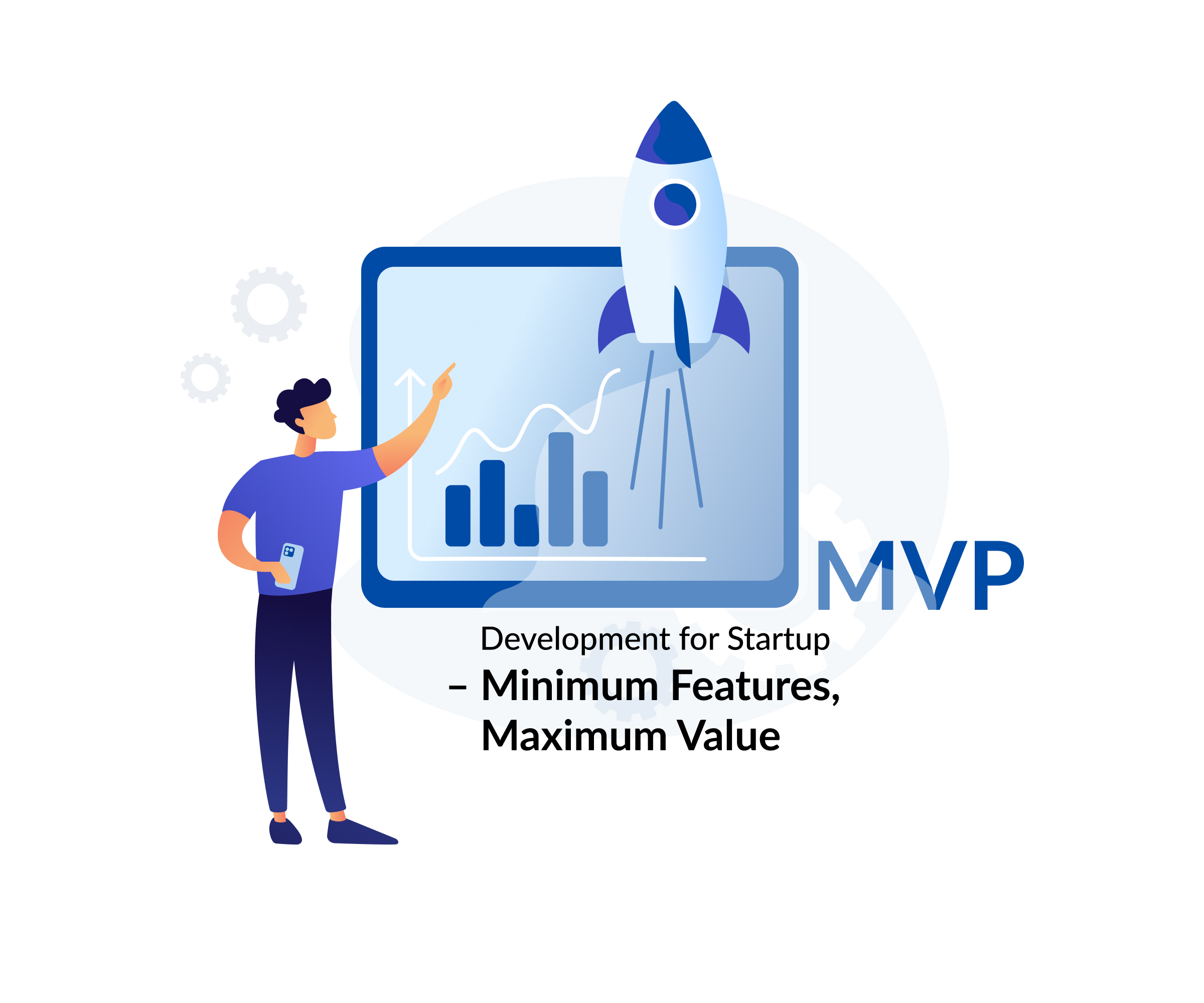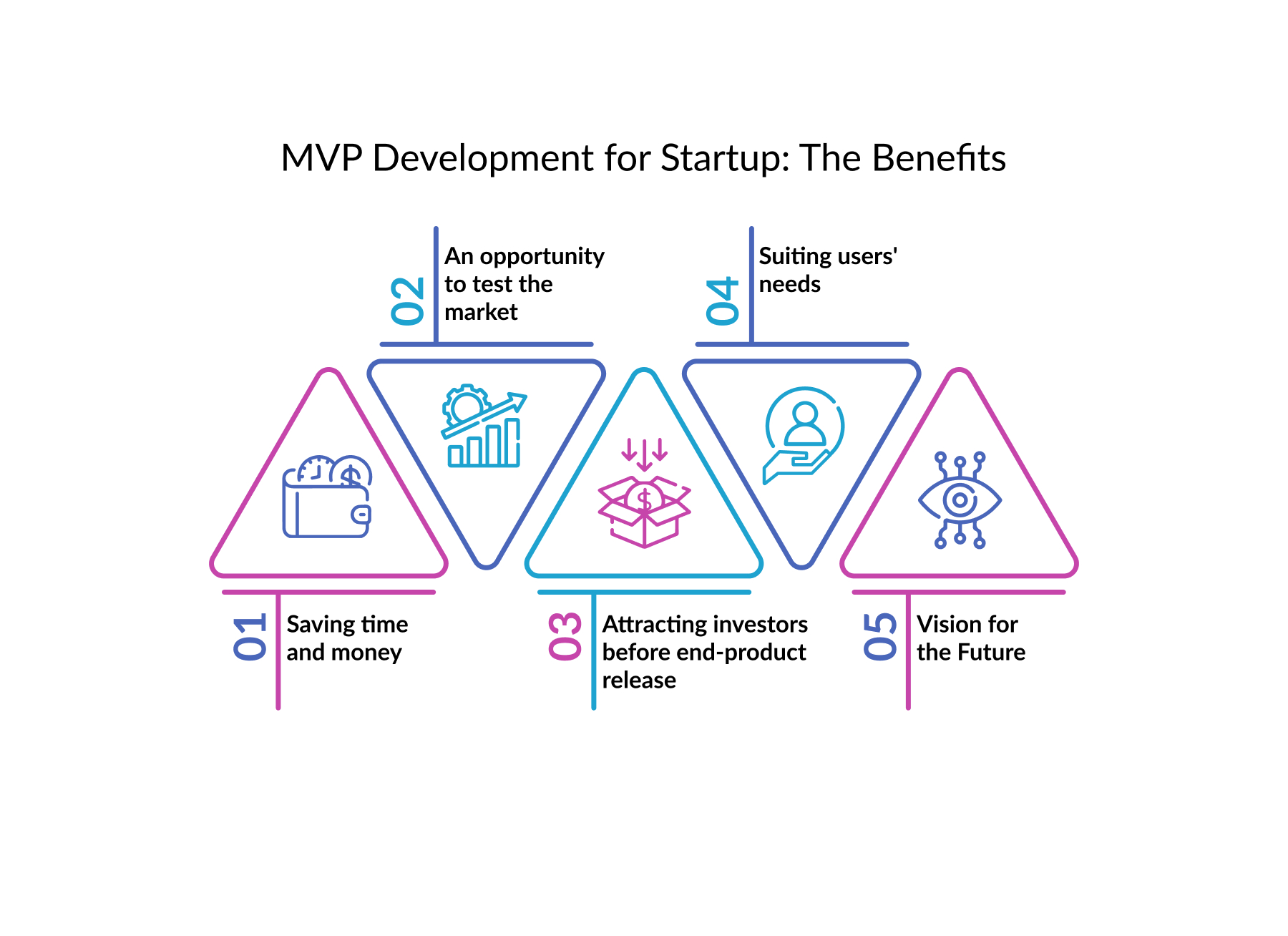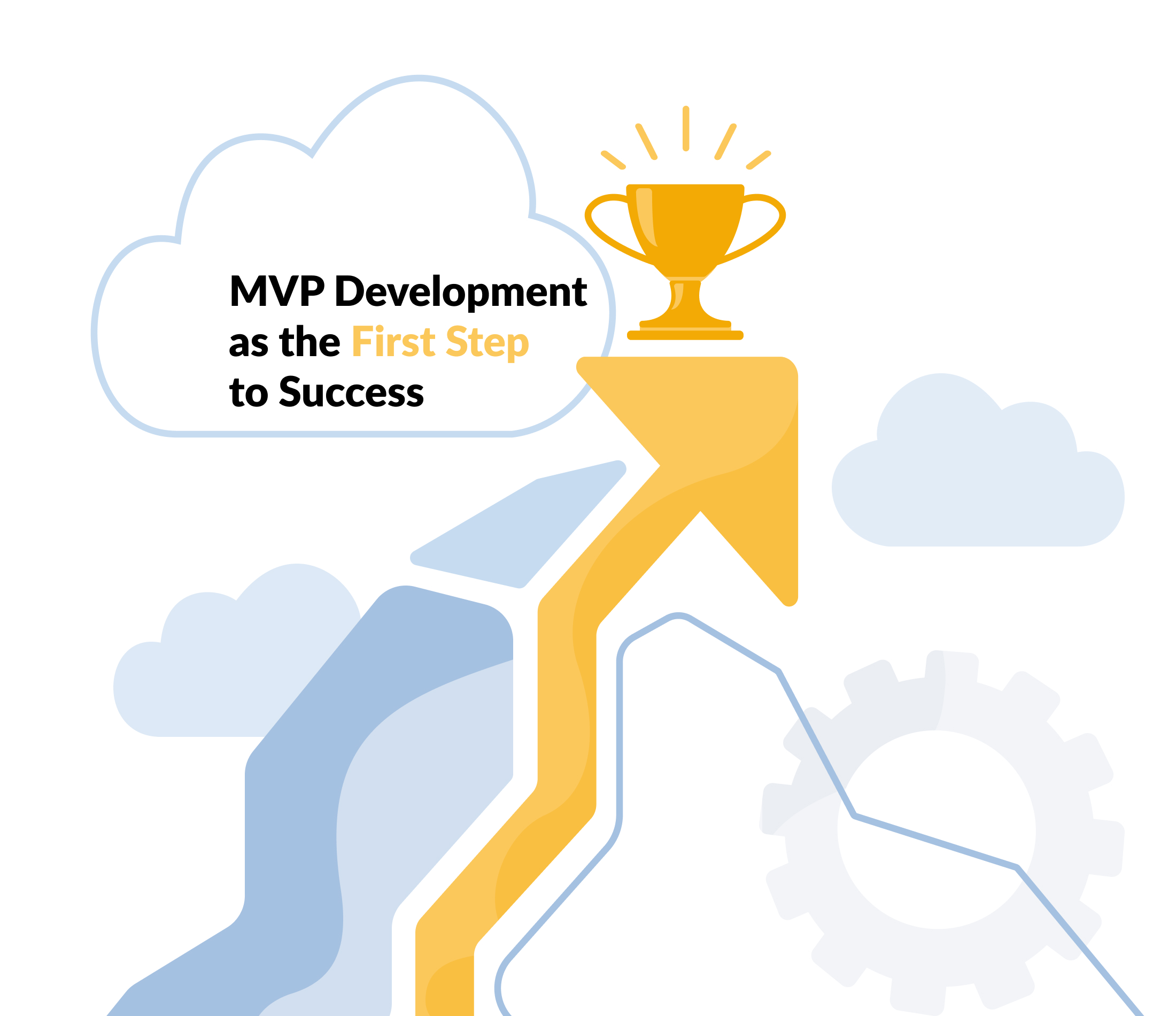Do you have an excellent service or application idea that addresses user demands? Refrain from rushing to spend money on a fully functional product and putting in long hours of labor without going publicly. Instead, keep it simple till it requires more features. Get Quintagroup MVP Development for Startup.
A real-life illustrative example of an MVP (minimal viable product) would be a chef creating a new dish. The chef might start by trying the basic ingredients and flavors to create a basic version of the dish, which would be the minimum viable product. From there, they can get customer feedback, fine-tune the recipe, and add more layers of flavor and extras to produce and perfect a more sophisticated version.

So, What Is MVP?
A minimum viable product (MVP), or a version of an end product with the bare minimum of features, is how many startups today enter the market. Without investing years in development, this is a fantastic way to get feedback and insights into a novel idea.
It takes an average of 4 months to develop an MVP. Your MVP can be delivered faster and cheaper if you outsource the right MVP development team. That’s precisely the moment when Quintagroup MVP Development for startup services enters the game.
Let’s Introduce Types of MVPs
There are distinct differences between MVPs regarding their specific approaches and purposes.
Low-fidelity MVP
Low-fidelity MVP is a clickable prototype of your product. Quintagroup team can build such an interactive interface using MaterialUI. We can test the product’s functionalities and collect user feedback. It’s an incredible opportunity to try out your idea before investing in developing a full-fledged product.
Low-fidelity MVPs are intended to test the market before releasing an actual product:
- Launching surveys
- Collecting data from audience reactions to ads
- Persuading users to follow updates and donate money toward a future product
Real examples can be landing pages, marketing campaigns, and email campaigns.
High-fidelity MVP
High-fidelity MVP is more sophisticated in terms of appearance and features. This prototype bears more resemblance to the end version of the product. It comprises both front-end and back-end parts and includes the most essential functionality. High-fidelity MVPs take more time and money to create. Still, they are more thorough and will give your business more accurate user feedback.
Some other examples include pre-order MVP, single-feature MVP, and others.
How Can MVP Development for Startup Benefit Your Business?

An MVP is a great way to start your product development process because it has numerous advantages for your company. Some significant benefits of MVP development for startups are listed below.
An MVP helps you save both time and money
For a creator of a new product, giving your product redundancy of features might sometimes be too risky. This way, you can overwhelm your potential client at first sight. This implies that there might be better plans for your company’s prosperity than investing much money into something consumers have not tried and approved.
The ideal solution would be to make the main aspects of your product available to beta testers and then proceed to improve your product, depending on their comments. It’ll cost you less. Moreover, less time is needed because, unlike in a full-fledged app, changes to MVP happen gradually. Thus, you will reduce the risk of failure and financial damage.
It lets you test the market
MVP promotes a brand’s value and advantage over the competition and enlightens consumers about it. In addition, it provides a fantastic way to evaluate how a product will be perceived once it has been fully developed.
The target audience will be already engaged by using or considering the app, with all market aspects considered. Consequently, the client base will be aware of the product before the original launch and release.
This strategy enables a business owner to introduce the product to the market more quickly. The product will enter the market in the development stage.
Attracting investors before end-product release
Investors directly influence any business’s success. However, no one will invest in “fictional” software. Investors must thoroughly grasp the company plan, the economic feasibility, and the dangers associated with the project before investing their money.
Using a Minimum Viable Product in software development allows developers to make a usable product so potential investors may try it out. Getting user feedback gives us a sneak peek of what to anticipate once the end product is built.
This way, you will avoid the risk. MVP serves as a teaser. With it, you might attract shareholders and prevent possible financial damage, as developing fully functional software with its many functions will cost more and take more time to come to life than MVP.
Development with the Client in Mind
While the software is designed to be minimalistic, it must always keep the end user’s needs in mind. Therefore, the business will have to restrict the software features to those that address user issues, leaving out any extras.
The software won’t initially benefit much from these capabilities, even though they may make it appear complex. Instead, users prioritize finding simple answers to their problems. With an MVP, the only objective is to fulfill user needs.
When a company starts with the Minimum Viable Product, required upgrades are quicker to implement. In addition, iterating on an MVP requires fewer resources than altering a sizable, complex final solution.
Vision for the future
Improved scalability is another advantage of MVP. Team leaders may determine what changes must be made and what new features should be developed once a company publishes a Minimal Viable Product and receives user feedback. A progressive build-up method allows a business to concentrate on improvements.
The developers may iterate by enhancing consumers’ suggestions and introducing features for new use cases. The product will scale to a larger audience through continuous enhancements based on prior customer experience.
Startups that Succeeded After Launching as MVP

If you think MVPs are just for new businesses or those with limited finance, the following examples will change your mind. Some well-liked initiatives once started as MVPs and then gradually evolved into the finished products that they are now.
Amazon
Amazon first began selling books online to compete with Barnes & Noble, which mainly were still operating as brick-and-mortar stores. However, the company just needed to concentrate on the books at low costs aspect in the 90s via a straightforward website for it to flourish and spread out to turn into the commercial giant it is presently.
The only purpose of Facebook’s MVP was to bring students together through their educational environment and let them publish messages on their pages. Friends Reunited and other social networks had the concept first, but Facebook’s simplistic solution and the momentum it gathered as it spread among college grads proved irresistible. Facebook incorporated all the necessary features after being on everyone’s lips.
HubSpot
You must be familiar with HubSpot. But did you know that what is today regarded as one of the most popular CRMs companies use to increase sales kicked off as a straightforward blog? As a result, HubSpot swiftly collected customer feedback, developing a solution centered on digital marketing and lead creation. This inspired them to create a CRM platform.
Airbnb
One of the most well-known MVP development for startup examples is Airbnb. The company’s founders knew their idea was solid. Still, they wanted to be sure it would succeed before committing money and risking a loss. They created a simple website to advertise their property and immediately found a possible renter, confirming their standpoint. They proceeded to develop the MVP into a thriving, full-featured platform.
Grammarly
This app’s primary goal was to assist students in writing better essays and comprehending the peculiarities of the English language.
Because the idea behind the app was topical at the time, it grabbed users’ and investors’ interest reasonably early. Three years later, Grammarly became a browser plugin, getting increasingly active users.
The application is rich in features that go beyond a basic spell checker. Yet, many users only upgrade to the pro version once they discover its fantastic features.
Wrapping Up
Creating an MVP makes perfect sense when businesses want to validate an idea. Doing this saves time and money that could otherwise be lost on developing and polishing a product out of demand. Organizations may also choose the optimal course for the product based on how consumers use the MVP. It is possible to build a product in a way that is explicitly focused on consumer demands rather than what the company believes the customer requires by receiving direct client feedback. Quintagroup is happy to help you with MVP development for startup and the ongoing installation of the new features. Contact us to talk about the specifics.
